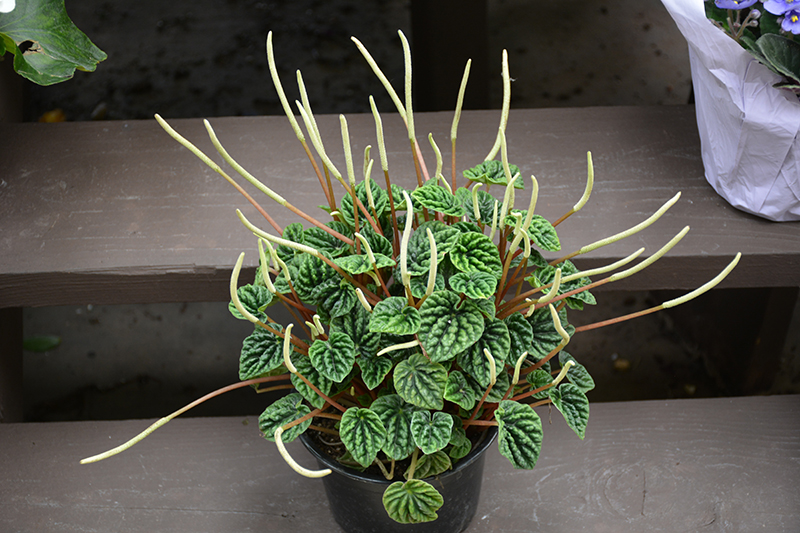Plant Height: 10 inches
Flower Height: 14 inches
Spread: 18 inches
Sunlight:
![]()
Other Names: Emerald Ripple Peperomia
Description:
This stunning plant produces intricate, rippled, heart shaped green leaves with dark green, near black veins and possible red overtones; slender creamy flower stalks in summer; low to bright light, no direct sun
Features & Attributes
Ripple Peperomia's attractive crinkled heart-shaped leaves remain light green in color with distinctive dark green veins and tinges of black throughout the year on a plant with a mounded habit of growth. It features unusual spikes of creamy white flowers rising above the foliage from early summer to early fall. The brick red stems can be quite attractive and add to the plant's interest.
This is an herbaceous evergreen houseplant with a mounded form. You may trim off the flower heads after they fade and die to encourage releat blooming.
Planting & Growing
When grown indoors, Ripple Peperomia can be expected to grow to be about 10 inches tall at maturity extending to 14 inches tall with the flowers, with a spread of 18 inches. It grows at a slow rate, and under ideal conditions can be expected to live for approximately 5 years. This houseplant should only be grown away from direct sunlight or in a room with strong artificial light. It does best in average to evenly moist soil, but will not tolerate standing water. The surface of the soil shouldn't be allowed to dry out completely, and so you should expect to water this plant once and possibly even twice each week. Be aware that your particular watering schedule may vary depending on its location in the room, the pot size, plant size and other conditions; if in doubt, ask one of our experts in the store for advice. It will benefit from a regular feeding with a general-purpose fertilizer with every second or third watering. It is not particular as to soil type or pH; an average potting soil should work just fine.
There are many factors that will affect the ultimate height, spread and overall performance of a plant when grown indoors; among them, the size of the pot it's growing in, the amount of light it receives, watering frequency, the pruning regimen and repotting schedule. Use the information described here as a guideline only; individual performance can and will vary. Please contact the store to speak with one of our experts if you are interested in further details concerning recommendations on pot size, watering, pruning, repotting, etc.
-- THIS IS A HOUSEPLANT AND IS NOT MEANT TO SURVIVE THE WINTER OUTDOORS IN OUR CLIMATE --

